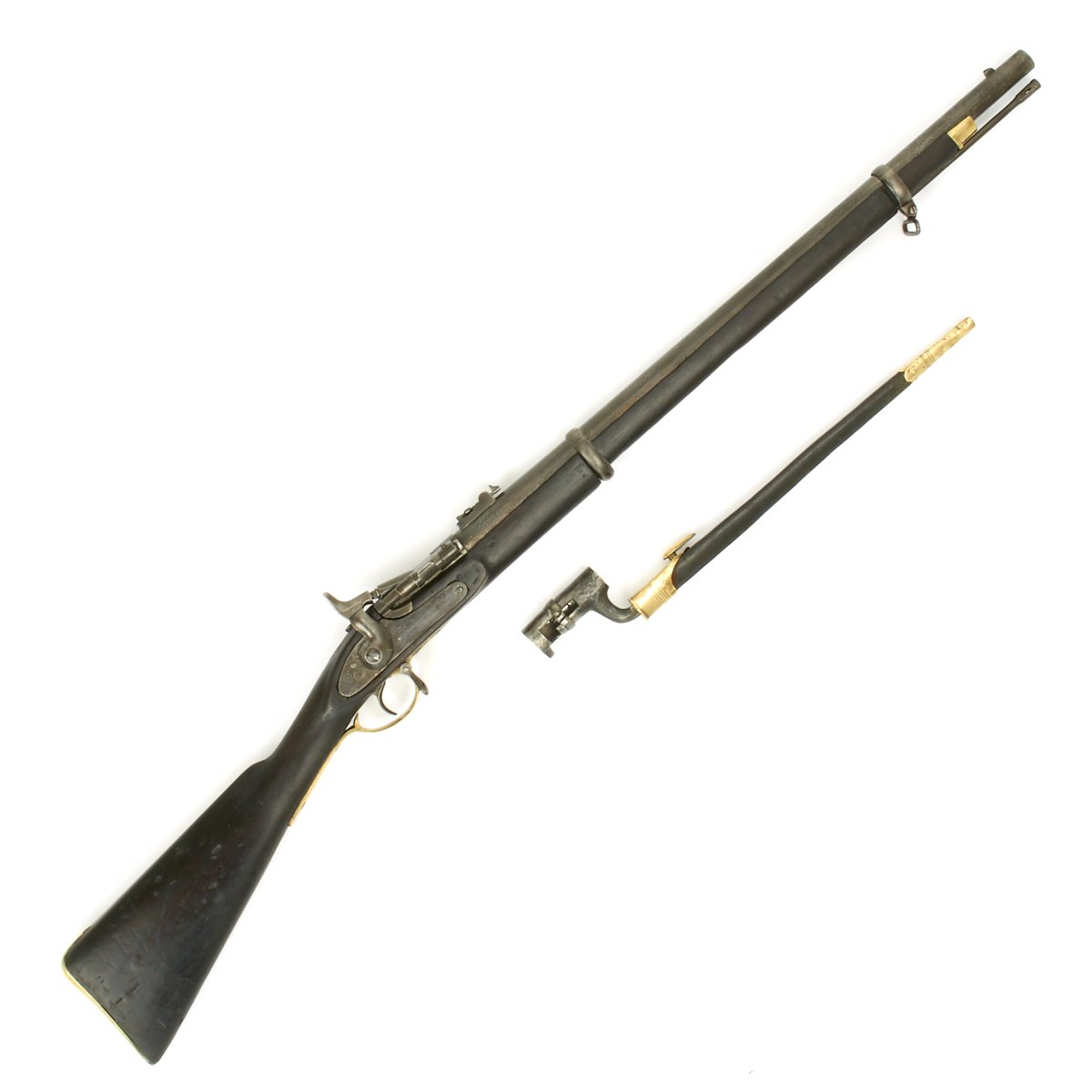Original British Gurkha P-1864 Snider Two Band Short Rifle with Socket Bayonet – Cleaned and Complete Original Items
$ 895,00 $ 223,75
Original Item: Only One Available. The Two Band Short Snider Rifle was used by Gurkha Infantry Mountain troops, issued in .577 caliber and fitted with an original 26.5″ barrel secured by only two steel barrel bands. Correct short pattern includes a ladder back sight with the brass furniture, checkered wrist stock, with an overall length only 45″. These scarce short infantry rifles were issued exclusively to Gurkha Mountain units in small numbers.
This example has been expertly restored by our IMA master antique gunsmith. It is sound, with no known flaws, and has been brought back to life to appear how it must have looked the day it was issued. In the entirety of the Nepal cache find, fewer than 40 short snider rifles were ever discovered, out of 55,000 guns making this a stunningly rare rifle.
Additionally most of our Short Rifles were made to be fitted with the Nepalese version of the British P-1856 Saber bayonets. Very few were found to be issued with a socket bayonet as this is. Needless to say original brass mounted leather scabbards were very thin on the ground. This short rifle has been fully cleaned to really nice display condition and surprisingly bears few Nepalese markings, just one on the breech block and one on the bayonet.
History of the Snider-
Jacob Snider, an American from New York, developed this breech loading system for the P-1853 Enfield, the most prolific imported Percussion rifle in use by both the North and South during the U.S. Civil War. When the British Board of Ordnance appointed a Select Committee in 1864 the snider system was swiftly adopted with the first breechloaders being issued in 1865 to British forces. Improved in 1867 by the use of Colonel Boxer’s center fire brass bodied cartridge, the rifle was used very effectively in the Abyssinian Campaign of 1868. The system utilized a hinged breech block with an internal firing pin assembly that permitted the use of a self contained cartridge of lead bullet in cardboard, and, after 1867, brass casing. This highly efficient conversion system prolonged the active life of the P-1853 rifles up until 1871 when the Martini System was adopted. Snider rifles saw continued use throughout the Empire but were officially obsolete by the late 1880s.
NOTE: International orders of antique firearms MUST be shipped using UPS WW Services (courier). USPS Priority Mail international will not accept these.
Fast Shipping with Professional Packaging
Thanks to our longstanding association with UPS FedEx DHL, and other major international carriers, we are able to provide a range of shipping options. Our warehouse staff is expertly trained and will wrap your products according to our exact and precise specifications. Prior to shipping, your goods will be thoroughly examined and securely secured. We ship to thousands clients each day across multiple countries. This shows how we're dedicated to be the largest retailer on the internet. Warehouses and distribution centres can be located throughout Europe as well as the USA.
Note: Orders with more than one item will be assigned a processing date depending on the item.
Before shipping before shipping, we'll conduct a thorough inspection of the items you have ordered. Today, the majority of orders will be delivered within 48 hours. The delivery time will be between 3-7 days.
Returns
The stock is dynamic and we cannot completely manage it because multiple stakeholders are involved, including our factory and warehouse. So the actual stock may alter at any time. It's possible that you may not receive your order once the order has been made.
Our policy is valid for a period of 30 days. If you don't receive the product within 30 days, we are not able to issue a refund or an exchange.
You can only return an item if it is unused and in the same state as the day you received it. You must have the item in its original packaging.
Related products
Uncategorized
Uncategorized
Uncategorized
Uncategorized
Uncategorized
Uncategorized
Australian WWII Owen MK1 Machine Carbine SMG Custom Fabricated Replica with Sling Original Items
Uncategorized
Uncategorized
Uncategorized
Uncategorized
Uncategorized
Uncategorized
Uncategorized
Band of Brothers ORIGINAL GERMAN WWII Le. F.H. 18 10.5cm ARTILLERY PIECE Original Items
Uncategorized
Uncategorized
Armored Burgonet Helmet & Polearm from Scottish Castle Leith Hall Circa 1700 Original Items













































































